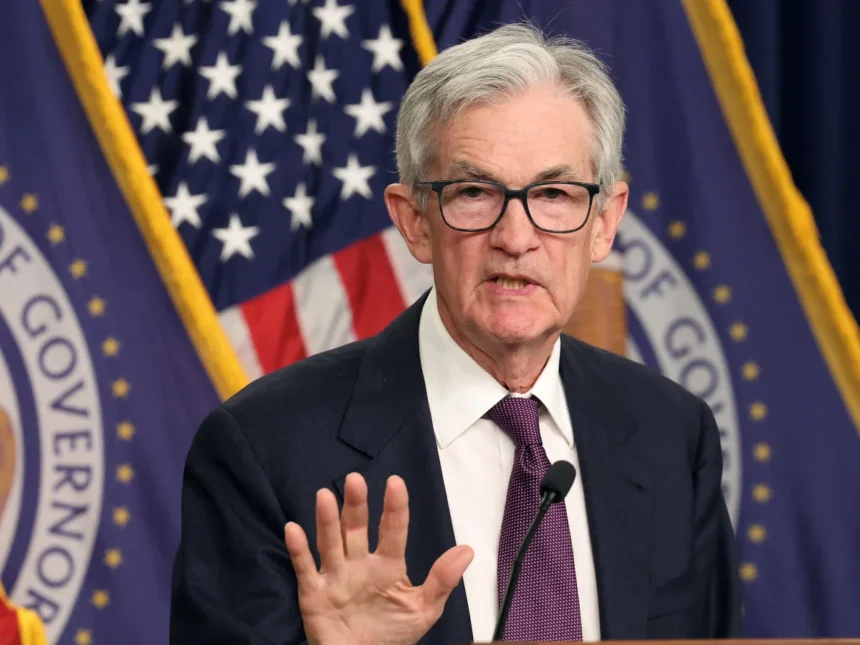US Federal Reserve Maintains Key Rate at 4.3% for Fourth Straight Time
The US economy continues to navigate a complex mix of policy shifts and global uncertainties. Despite growing concerns over tariffs and inflation Fed interest rates, the US Federal Reserve once again decided to keep its key interest rate unchanged at 4.3% this week, marking the fourth consecutive pause since December 2024.
Fed Chairman Jerome Powell announced the decision, emphasizing that the central bank is monitoring the economy’s resilience even as forecasts indicate slower growth and higher inflation ahead. The Fed’s decision underscores its cautious approach amidst a volatile economic environment heavily influenced by trade policies and political rhetoric.
Tariffs Fuel Inflation Concerns
President Donald Trump’s latest moves to increase tariffs on imports have raised alarm bells within the financial sector. While Trump continues to pressure the Fed to cut interest rates, Fed officials are wary that these tariffs could trigger a temporary surge in prices that might evolve into more sustained inflationary pressures.
“That process is very hard to predict,” Powell noted, highlighting the uncertain impact of tariffs on long-term inflation. With inflation already running at 2.4% in May, above the Fed’s 2% target, officials believe that holding rates steady allows them flexibility to adapt as the full effects of tariffs become clearer.
Economic Projections Worsen
The Federal Reserve’s updated forecasts reveal a dimming economic outlook. Growth is now projected to slow to 1.4% for 2025, down from the previous year’s 2.5% and below the 1.7% forecast in March. Unemployment is expected to climb to 4.5%, while inflation could rise to around 3%.
Despite these downgraded forecasts, Powell stressed that the overall economy remains “solid,” with the current unemployment rate still relatively low at 4.2%. The Fed’s longer-term expectations show only modest changes, with rate cuts expected in 2025 but slightly higher rates projected for 2026 and 2027 than previously anticipated.
Political Pressure Mounts
In his remarks prior to the Fed’s announcement, President Trump renewed his criticism of Powell, calling him “stupid” and suggesting that the Fed had been too slow to act. Despite the political pressure, the Fed has maintained its independence, opting to wait for more definitive signs of economic distress before making any moves.
Isaac Stell, investment manager at Wealth Club, observed, “Central bankers tend to jealously guard their independence, which means that unless there’s a really compelling reason to cut they might just stay sat on the fence.”
Global Context: Diverging Central Bank Strategies
While the Fed holds its position, other central banks have taken more aggressive action. The European Central Bank has cut interest rates eight times since last June, while the Bank of England lowered rates last month but is expected to hold steady in its upcoming meeting. This divergence highlights the complex and differing economic challenges faced by major global economies.
What It Means for Borrowers and Businesses
The Fed’s benchmark interest rate significantly influences borrowing costs across the US economy, affecting everything from mortgages to business loans. Although current rates remain much higher than the near-zero levels seen between 2008 and 2022, they are roughly one percentage point lower than last year’s peak levels.
For American households and businesses, this means that loans remain relatively expensive, potentially dampening investment and consumer spending in the months ahead. The Fed’s cautious stance suggests that any relief in borrowing costs is unlikely to come quickly, unless the economy shows sharper signs of weakening.
Conclusion: The Fed’s Wait-and-See Approach Continues
With inflation pressures persisting and political tensions rising, the Federal Reserve appears committed to its wait-and-see strategy, carefully balancing the risks of acting too soon against the potential costs of inaction. As global trade tensions escalate, all eyes remain on future Fed meetings to see whether signs of economic strain will finally prompt a shift in policy.


